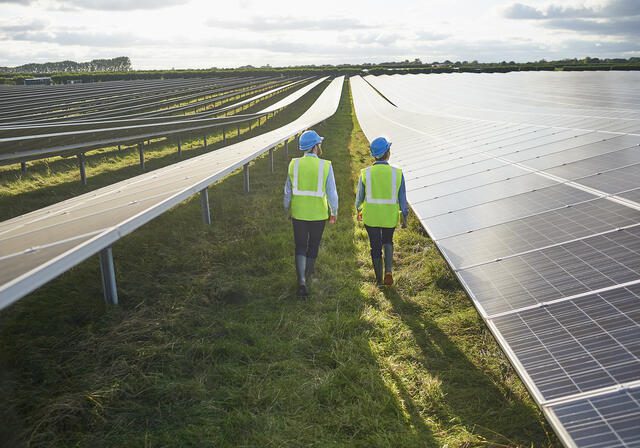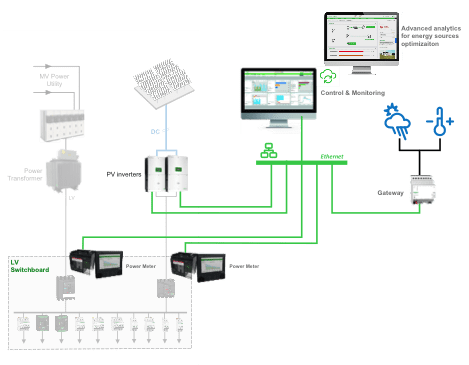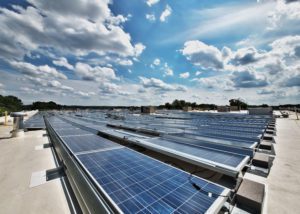The integration of renewable energy sources and storage in buildings generates additional needs for control and monitoring, not only to assure optimal operation but also to obtain a return of investment as quickly as possible.

Monitor to understand your energy production and usage, detect problems early, and take appropriate actions
To understand how electrical energy is being used and how it can be optimized, owners should:
- Track how the photovoltaic (PV) energy produced is being consumed by the loads, stored, or injected to the grid
- Follow and analyze the trends of the PV production alongside the loads’ consumption
- Calculate economic benefits related to the diminished consumption of energy from the grid
Asset management features should also be provided by a PV monitoring system. This should include assessment of PV system performance, detection of drifts or malfunctions, and immediate notification about faults. Also, because PV inverters can affect the power quality of the electrical installation, it is recommended that power quality disturbances be measured and followed, especially harmonics and unbalance.
Control to operate local sources and loads depending on constraints and objectives
When integrating local sources such as a PV system into a building electrical installation, control functions are often required. These functions will depend mainly on the available local sources, on the contract with the local energy supplier, and on the type of installation: grid-connected, microgrid-type, or off grid.
For example, for an installation with grid-connected PV production, the required control functions could include:
- limiting PV production in order to not inject power to the grid
- managing power factor at the point of grid connection to avoid penalties
- shifting loads to the period of PV production to maximize self-consumption
- participating in demand response, especially when storage or generators are also part of the installation
If we take the example of a microgrid type, additional control functions are required because the control system should ensure the transition from grid-connected mode to off-grid mode and vice versa, as well as the balance between electrical consumption and local electrical energy production in off-grid mode.
Using advanced analytics to optimize use of local sources
Advanced cloud-based analytics enable further optimization of the usage of local electricity production, which achieves additional economic savings.
By considering complementary criteria such as changing electricity tariffs, weather forecasts, and expected consumption, advanced analytics provide the optimal system configuration. A set point for each local source is further transmitted to the local control system.
A digital architecture fulfills monitoring, control, and optimization functions
Now, let’s review the digital architecture that can meet these requirements.

First, you need to collect input data, such as:
- Photovoltaic production and inverter status, from the PV inverters
- Power measurements, energy usage, and power quality data, from the power meters.
- Information on weather conditions, such as temperature and irradiance, provided by sensors.
These data are collected using communication networks. High-end power measurement devices and PV inverters are usually connected directly through Ethernet. For sensors and other devices, gateways may be needed.
For monitoring purposes only, the data acquisition frequency can be every 10 minutes on average. But when local control functions are required, the data should be collected more frequently.
The collected data are used by an on-premises control system to operate the electrical installation equipment effectively and efficiently. Algorithms and analytics can provide optimal set points for the local energy sources and controllable loads.
The collected data also are used by on-premises or cloud-based software for visualization, analysis, and reporting.
To learn more about monitoring recommendations for photovoltaic installations integrated in buildings, watch this video on photovoltaic self-consumption.
This video is part of a series prepared by Schneider Electric’s technical communication group that addresses various aspects of PV system design, installation, and operation. You can also download our EcoStruxure™ Power Digital Applications Design Guide.



